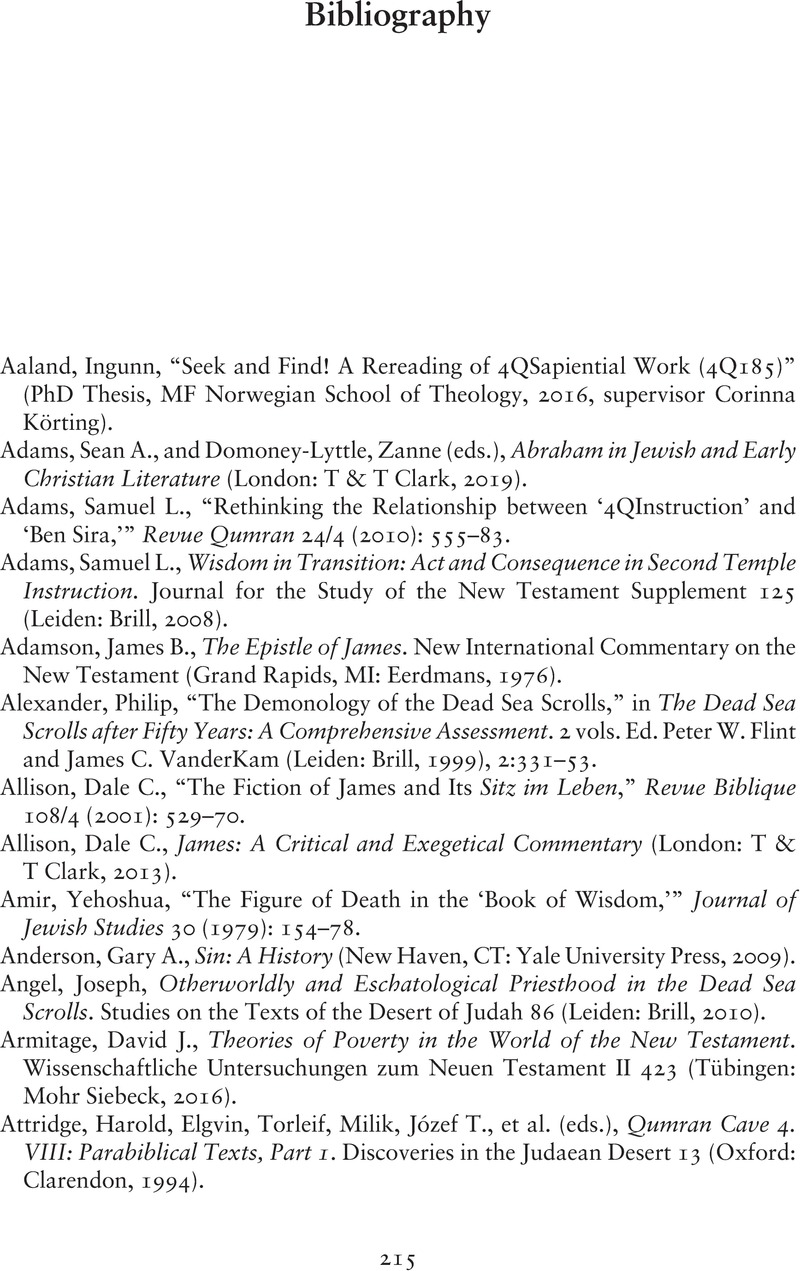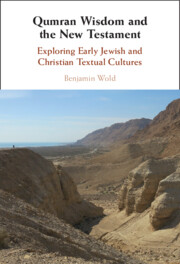Book contents
- Qumran Wisdom and the New Testament
- Qumran Wisdom and the New Testament
- Copyright page
- Dedication
- Contents
- Preface
- Acknowledgments
- Introduction
- 1 Cosmology and Eschatology
- 2 Universalism and Particularism
- 3 Wisdom As Action
- 4 Poverty and Humility
- 5 Debt Remission in the Matthean Lord’s Prayer
- 6 Paul
- Conclusion
- Bibliography
- Index
- References
Bibliography
Published online by Cambridge University Press: 22 December 2022
- Qumran Wisdom and the New Testament
- Qumran Wisdom and the New Testament
- Copyright page
- Dedication
- Contents
- Preface
- Acknowledgments
- Introduction
- 1 Cosmology and Eschatology
- 2 Universalism and Particularism
- 3 Wisdom As Action
- 4 Poverty and Humility
- 5 Debt Remission in the Matthean Lord’s Prayer
- 6 Paul
- Conclusion
- Bibliography
- Index
- References
Summary

- Type
- Chapter
- Information
- Qumran Wisdom and the New TestamentExploring Early Jewish and Christian Textual Cultures, pp. 215 - 234Publisher: Cambridge University PressPrint publication year: 2022

